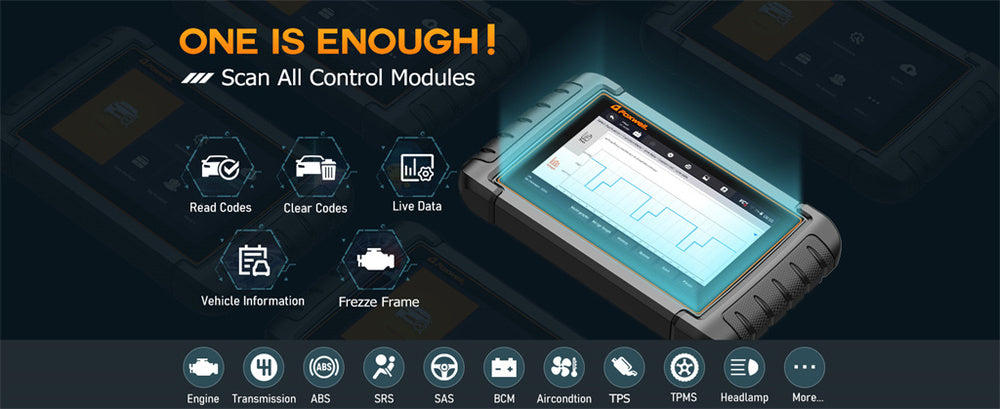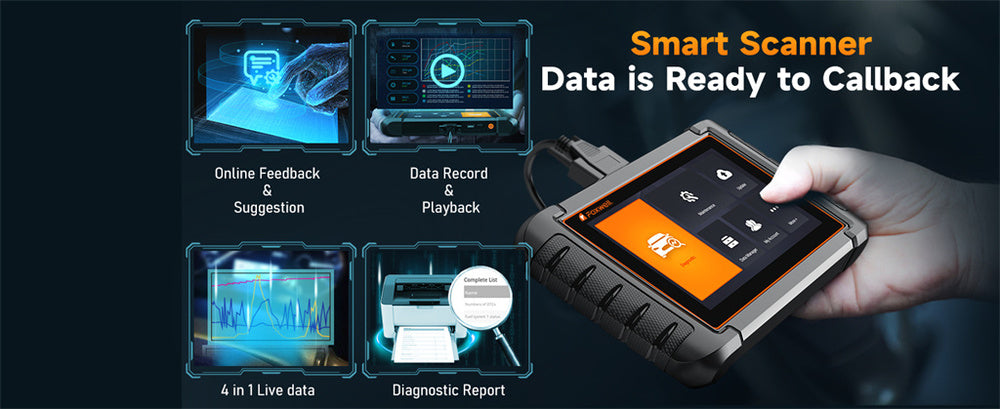Your car's cruising along, foot planted on the gas, when suddenly, without warning, it hesitates or even stalls.
The issue could lie with its TPS, an essential piece of equipment that senses when the throttle is being applied to its engines.
But don't despair just yet: thanks to automotive scan tool, you can reset your TPS at home and get it running smoothly again.
Now, let's discuss how you can do it and identify and solve common TPS problems.
What Is a TPS, and Why Must it be Reset?

A TPS acts like an intermediary between your foot on the gas pedal and your engine's throttle opening mechanism, providing vital feedback on air intake rates and travel speed—your car's brain--the ECU.
Over time, your TPS may lose its calibration, just like your phone's GPS may become inaccurate after being used for some time.
Its sensor wears out over time, or environmental conditions such as heat or dust influence it and send incorrect data, leading to driving issues like jerky acceleration, poor fuel economy, and even stoplight stalling.
Resetting it acts like pressing "refresh," allowing the car to recalibrate itself and read correctly.
Common Signs of a Faulty Throttle Position Sensor
Your car will usually tell you if its Throttle Position Sensor (TPS) has become compromised.
One telltale symptom might be engine stalling or hesitation upon pressing the gas.
Perhaps your car refuses to go anywhere when pressed; that could be your TPS sending mixed signals, sending an inconsistent message about acceleration.
Another telltale sign is an unstable idle.
Your car might feel as if it is shuddering or revving up and down while sitting still at a stoplight—almost like the engine is confused about how much air is reaching its components and trying to figure it all out on its own.
Delay acceleration is one of the critical problems associated with modern cars. when pressing on the gas pedal and expecting immediate acceleration, instead, it feels sluggish or like your engine doesn't respond as expected - which may be caused by your TPS not sending out enough messages for its engine to react appropriately.
If you're still uncertain, check your dash: the Check Engine light might light up as a telltale sign something's amiss with your TPS. Also, keep fuel economy in mind. an improper TPS could send mixed signals to the ECU and result in excessive fuel being burned, and filling up more often could also be an indicator.
Tools and Prep for Resetting Throttle Position Sensor
Before undertaking TPS resets, gathering a set of essential tools is advisable. Your main need should be an OBD2 scanner.
This device connects directly with your vehicle's computer, allowing direct communication between it, its ECU, and itself—essential when trying to reset TPSs manually! Without an OBD2 scanner, resetting TPSs can become challenging.
Your TPS may require some essential mechanic tools, like wrenches or screwdrivers, just in case it needs to be removed before resetting.
Your owner's manual should always be your go-to resource when dealing with car problems. it will often indicate where the TPS can be found or which codes may appear if something goes amiss. While not strictly necessary, battery testers can be invaluable allies.
If your battery is weak, the ECU might not reset properly, so it's better to test now rather than later!
Once everything is ready, please park your car on level ground, engage its parking brake, and ensure its engine has cooled completely before beginning your tinkering.

How to Reset Throttle Position Sensor
The Foxwell NT809TS OBD2 scanner is a great tool for resetting the TPS. Not only does it support a TPS reset, but it also offers over 30 additional reset services, making it a fantastic all-around tool for home mechanics. Here’s how to use it to reset your TPS:
Find the OBD2 port in your car which usually under the dashboard.
Plug in the Foxwell NT809TS scanner. It should fit snugly into the OBD2 port.
Turn the ignition to the “On” position without starting the engine. This powers up the ECU so the scanner can communicate with it.
Navigate the NT809TS’s menu to find the “TPS Reset” or “Accelerator Pedal Position Reset” option.
The scanner’s interface is user-friendly, and it will guide you through the process step by step.
Thanks to its bi-directional capabilities, the Foxwell NT809TS ensures a quick and precise reset.
Follow the on-screen instructions. The scanner will walk you through each step, ensuring that the reset is completed correctly.
Turn off the ignition and disconnect the scanner once the reset is done.
Test drive the car. Take it for a spin and see if the throttle response has improved.
By using a professional-grade tool like the NT809TS, you save time and ensure accuracy.
Plus, it’s more than just a TPS reset tool—it’s capable of things like TPMS programming and battery resets, making it a great investment for any car owner.
How to Test If the Throttle Position Sensor Reset Was Successful
Once you've reset the TPS, testing whether it was successful is essential.
First, pay attention to how your engine idles.
Turn it on and let it sit for one minute with the engine running until it settles into an idle that doesn't rev or shake back and forth. If it remains smooth and steady, you successfully reset the TPS.
After resetting your car, take it for a test drive and push on the gas to feel how the car accelerates.
If the reset has adequately worked, acceleration should feel immediate--no lag or delays between pressing the pedal and moving the vehicle forward. Put.
Be mindful of your dashboard.
After resetting it, the Check Engine light should remain off. If it returns after the reset has taken effect, that could indicate either that TPS continues to act up or that something more sinister may exist under the hood.
Finally, monitor your fuel consumption over a week or so after performing the reset.
If it is successful, your fuel efficiency should increase; otherwise, something might be wrong with either the sensor or the reset process.
Tips to Keep in Mind During Throttle Position Sensor Reset
Below are a few key points when resetting your Throttle Position Sensor:
- Check the Battery: A weak or dying battery may interfere with an ECU's ability to reset the TPS, so if your TPS reset does not take, ensure its condition is satisfactory by checking its battery condition.
- Clear any other codes: It is wise to clear any additional trouble codes detected while resetting the TPS with an OBD2 scanner, as they could obstruct the reset process and interfere with it.
Leaving them can also interfere with the reset process and delay its success.
- Be Patient: Some vehicles need time to adjust after resetting.
Give the car time if things don't immediately settle into place after driving around a bit. Take several drives around before making a judgment call about its performance.
Conclusion
Resetting the throttle position sensor is a complex task. Still, most drivers can tackle it with the proper tools and knowledge.
Your TPS is integral to how your car drives, so properly calibrated is vital to performance, fuel economy, and overall driving enjoyment. Resetting it using an OBD2 scanner is to resolve issues quickly.
FAQs
How do I reset my ECU with OBD2?
To reset your ECU with an OBD2 scanner, connect the scanner to the vehicle’s OBD2 port, turn the ignition on (without starting the engine), and navigate to the "ECU Reset" option in the scanner’s menu. Follow the on-screen prompts to complete the reset.
Does a throttle body have to be reset?
Yes, resetting the throttle body is often necessary after cleaning or replacing it, as this ensures proper calibration and smooth operation.
How long does it take for OBD2 to reset?
The reset process usually takes only a few minutes, though some vehicles may need a short drive afterward to recalibrate fully.




Leave a comment
This site is protected by hCaptcha and the hCaptcha Privacy Policy and Terms of Service apply.